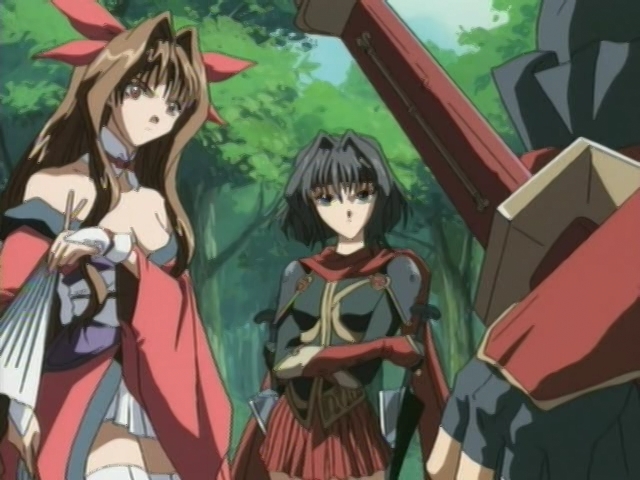
In a mythical Japan overrun by demons there are small brigades of warriors dedicated to protecting humanity from the powers of black magic. One of these brigades is the Crimson Lotus led by Rekka. Along with the four other members of Crimson Lotus (all of whom are women), Rekka is tasked with saving the human women of the realm from sex crazed monsters created by the Black Steel brigade of assassins.
The premise of Blood Shadow (2001), a three episode OVA, suggests the kind of hentai spectacle it contains. Blood Shadow is grim and gory with no shortage of nudity or graphic sex. Nao Okezawa, the director of Nigh Shift Nurses (2000), oversaw the production of Blood Shadow for AT-2 Project. As is the case with most hentai, Blood Shadow prioritizes graphic depictions of sex over plot.
Contrary to popular belief pornography, hentai, erotica, etc. are all legitimate art forms. From Un chant d’amour (1950) to Belladonna of Sadness (1973) to Public Affairs (1983); cinematic art has been thriving in the pornographic sphere. What these masterpieces accomplish that Blood Shadow fails to is to construct a synthesis of one form of expression (the plot, an idea, or aesthetic) with that of the explicitly sexual spectacle.
That isn’t to say that the basic narrative of Blood Shadow is bad by any means. The script by Ryo Saga is just uneven, swinging like a pendulum from moments of crass humor to violence or sex. To make up for the amount of runtime consumed by the carnal interludes in the dramatic structure the film employs a voice-over from the perspective of Rekka that is as subtle as it is redundant. Blood Shadow gestures towards fantasy world building without actually developing any of the characters or the general mythos.
Blood Shadow, both stylistically and conceptually, owes more than a little to Hideki Takayama, Yoshiaki Kawajiri and Toshio Maeda. However the level of visual artistry in the animation of Blood Shadow comes nowhere near that of the classic Urotsukidōji: Legend of the Overfiend (1989), Demon City Shinjuku (1988) or the contemporaneous films of Yasuomi Umetsu like Mezzo Forte (2000). Blood Shadow looks cheap and, with the exception of a few visual flourishes (mostly during flashbacks), lacks a unique production design.
The background paintings are the most visually consistent aspect of the overall design in Blood Shadow. These graphics lend the series its eerie atmosphere that evokes the Gothic. This is the glue that ties all of the rather haphazard pieces of Blood Shadow together over the course of its collective ninety minutes.
Being a mash-up of horror and hentai pretty much ensures that Blood Shadow will only appeal to a niche audience. For most viewers there’s likely to be too much sexual violence and too few monsters. But to those who grew up with Urotsukidōji in the children’s section of the video store Blood Shadow is relatively standard fair.
